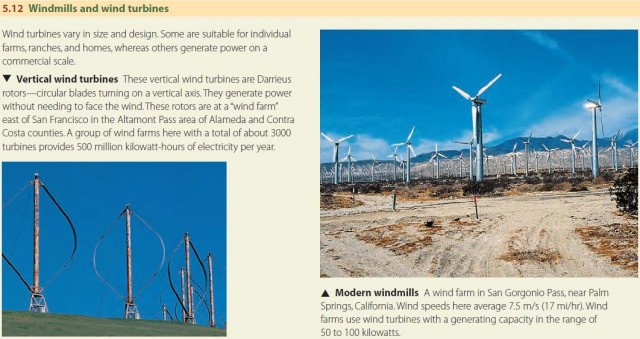Local Wind Patterns
Wind is defined as air moving horizontally over the Earth's surface. Air motions can also be vertical, but these are known by other terms, such as updrafts or downdrafts. Wind direction is identified by the direction from which the wind comes—a west wind blows from west to east, for example. Like all motion, the movement of wind is defined by its direction and velocity. The most common instrument for tracking wind direction is a simple vane with a tail fin that keeps it always pointing into the wind (Figure 5.6).
Anemometers measure wind speed. The most common type consists of three funnel-shaped cups on the ends of the spokes of a horizontal wheel that rotates as the wind strikes the cups. Some anemometers use a small electric generator that produces more current when the wheel rotates more rapidly. This is connected to a meter calibrated in meters per second or miles per hour.
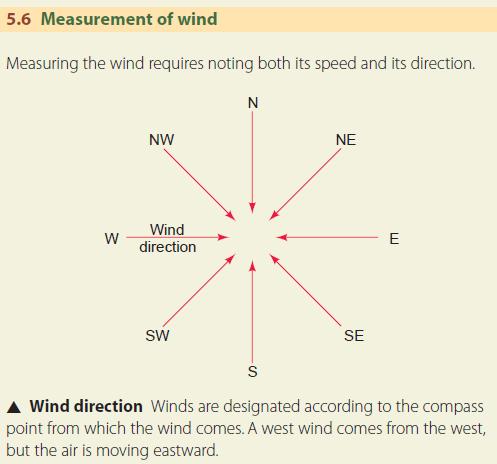
PRESSURE GRADIENTS
Wind is caused by differences in atmospheric pressure from one place to another. Air tends to move from regions of high pressure to regions of low pressure, until the pressure at every level is uniform. On a weather map, lines that connect locations with equal pressure are called isobars.
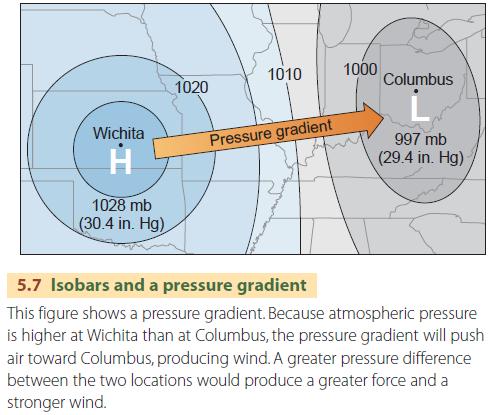
A change of pressure, or pressure gradient, occurs at a right angle to the isobars (Figure 5.7). Pressure gradients develop because of unequal heating in the atmosphere. Figure 5.8 shows how unequal heating creates a thermal circulation.
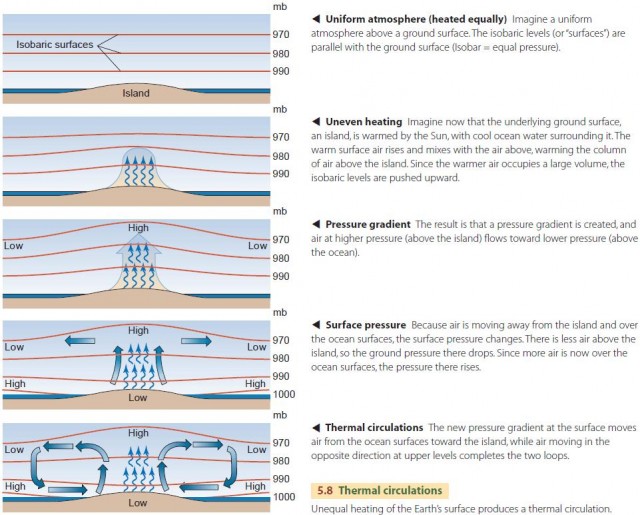
LOCAL WINDS
Local winds are driven by local effects. Sea and land breezes are simple examples of how uneven heating and cooling of the air can set up thermal circulations and create local winds (Figure 5.9). A similar situation creates mountain and valley winds. Often these winds are moderate and just part of the local environment. But some local winds are more dangerous.
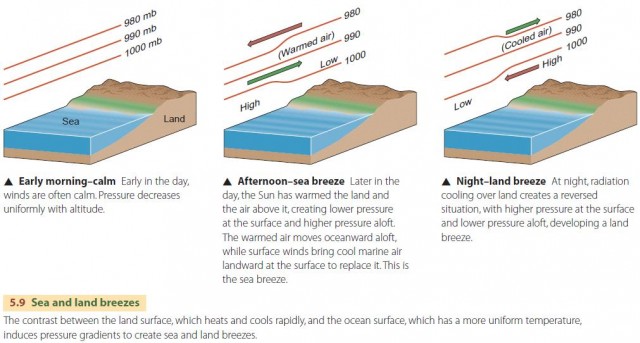
If you're from Southern California, you're probably familiar with the Santa Ana, a fierce, searing wind that often drives raging wildfire into foothill communities. It blows from the interior desert region of Southern California across coastal mountain ranges to reach the Pacific coast. It warms as it descends, and it is often funneled through local mountain gaps and across canyon floors with great force.
Other local winds include the chinook, a warm and dry local wind that results when air passes over a mountain range and descends on the lee side. It is known for rapidly evaporating and melting snow. The mistral of the Rhone Valley in southern France is a cold, dry local wind that descends from high plateaus through mountain passes and valleys.
WIND POWER
Wind power is an indirect form of solar power that has been used for centuries. The total supply of wind energy is enormous. The World Meteorological Organization has estimated that about 20 million megawatts could be generated at favorable sites throughout the world, an amount about 100 times greater than the total electrical generating capacity of the United States. Figure 5.12 shows some different types of windmills and wind turbines.
